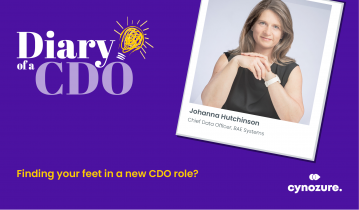By Susan Walsh
Guest post from our friend, Susan Walsh, AKA The Classification Guru, on the data quality coat
We all need to wrap up warm to protect ourselves from the elements, particularly during the harsh British winter. But it’s not just yourself you need to protect – your data needs a COAT too. And, not just for winter. It needs its COAT all year round.
And, just like COATs, not all data services are created equally. There’s a varying range of price, quality and reliability. And, if your data doesn’t have a good COAT, there could be a range of bad or costly decisions made which could affect the business performance, financial situation, risk jobs, or even the fate of the company.
Let me put it this way, you wouldn’t go out in the middle of a storm without the appropriate COAT and you definitely shouldn’t work with data or make business decisions without the same level of protection. This is especially true right now, when the business world is going through its own storm of its own as it tries to navigate life after Coronavirus.
So, what does this COAT do for your data?
It’s Consistent
Generally data is used by many people or teams, which can lead to multiple classifications of one product. For example, one person might put DHL as a ‘courier’, while another might log it as ‘logistics’ or ‘warehousing’. A taxi might be classified generically as ‘travel’ when it should be classed as ‘Travel > Road Transport > Taxis’ and a project cost should be assigned to the same budget or GL code, not several. Or it could even be a simple as units of measurement. One person may use ‘Litre’, another ‘Ltr’ and another ‘L’ – but these should all be one format. This means everything can be reported accurately, you get a true picture of what’s going on and better business decisions can be made.
It’s Organised
Data is only useful if it’s organised. Think of a messy closet, you’re looking for your favourite top but can’t find it as everything has been thrown in there. And, much like your closest, you can organise your data in different ways, depending on what you want to get out of it and that will produce different reports/analytics. You may want to assign data to employees, teams, departments, functions or internal categories, as well as time periods such as months and quarters, or year groups like P1, P2 etc… So, for example, when you need the information on the accounts that Sharon in Finance is working on, or the sales teams’ performance for the quarter – you can pull that information quickly.
It’s Accurate
This can mean different things to different people. At its most basic level, accurate data is correct. In more detail, this could be no duplicate information; correct invoice descriptions; correct classifications; no missing product codes; standard units of measure (e.g. ltr, l, litres); no currency issues; correctly spelled vendors; fully classified data; or the right data in the right columns.
So, what does this mean? It means greater visibility across your business in several areas, allowing better decisions, as well as time and cost savings and increased profits.
It’s Trustworthy
This is critical. Business decisions around jobs, staffing, budgets, cost savings and more are all based on data. Data is used by everyone from the bottom to the top of an organisation. You have to be able to trust that what you’re looking at is the right information, and you need it to be accurate in order for your teams to use the data in their daily jobs.
If they don’t trust the data, then they might not use the fancy new expensive software you’ve just spent tens of thousands of pounds installing. Or the new AI you’ve installed may not produce the right results because it’s learning from dirty data.
So, which COAT do I need?
If you take a walk down your local High Street, you’ll probably see a mix of shops selling COATs of varying levels of quality. Shopping for data services is the same.
You might be tempted by the low-cost option but, this is cheap, fast fashion. It’ll barely last the season before it’s out of favour. And it definitely won’t protect you (or your data) from the elements. Not to mention the fact you’ll definitely need to buy another the next time winter comes around again. It’s the same with data – if you don’t invest in good quality service you will end up paying twice as much, if not more, in the long run to fix the earlier mistakes.
You might be tempted then, to invest in the high-end option. But you’ll probably need to remortgage just to afford the designer label. It’s also probably totally impractical, has complicated care instructions and you’ll be too afraid to expose it to the elements – what use is that?!
So, where’s the middle ground? Well, last but by no means least, there’s your favourite coat. It’s with you through thick and thin… protecting you (and your data) from the elements. It’s dependable, reliable and always in style!
Like a good coat, data is an investment – not a cost. By making sure it has its COAT on, you’re saving time, money and avoiding future problems. And also like any coat, it needs to be maintained. You need to continually ensure your data is consistent, organised, accurate and trustworthy to get the most out of it.







